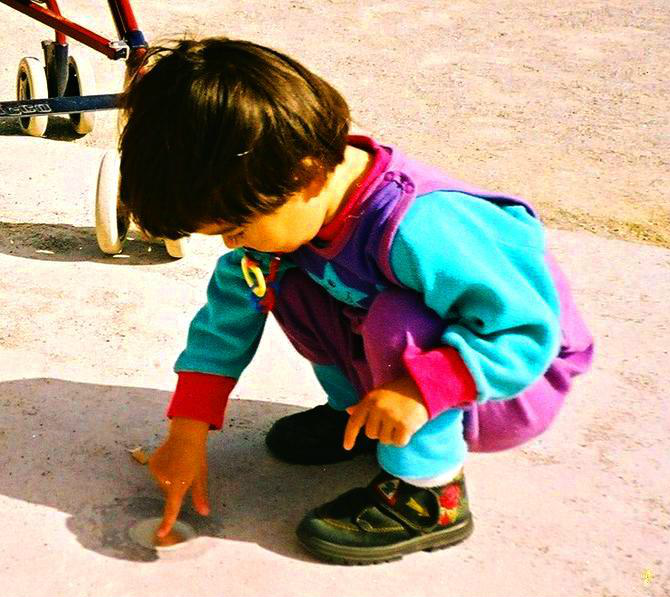I'm starting to believe that people aren't always interested in finding new information or the truth, as much as they are looking for validation of what they're thinking. I've been coming across instances of this more routinely over the past couple of months and I'm starting to think that the internet just facilitates this thanks to a glut of information. At any given moment, you can find something that will say exactly what you want to hear. The latest is an article making the rounds in fitness circles. It was a discussion on how the length of the femur affects the mechanics of a person's squat.
Purely on face value, it was an interesting read, but nothing revolutionary. What piqued my interest was the response that it was getting. I saw fitness professionals and group fitness instructors jumping on the bandwagon, expressing how this explained why they could not keep their chests up while they squat or why they should be careful not to coach everyone the same way.
The premise behind the article is that fluctuations in the length of the femur is one of many factors that may affect your squat mechanics. Things like heel elevation, ankle flexibility, and torso length will also play a role. However, it appears that since the title mentions femur length, this is the chief factor that everyone latched onto.
As a fitness professional and mechanical engineer, I call foul!
Especially on those folks who are criticizing the fact that in BODYPUMP®, we coach everyone to do the squat the same way.
[Disclaimer: I'm not speaking for LES MILLS® here. I am speaking as a mechanical engineer who happens to know a bit about moving parts. These are solely my opinions and do not reflect the opinions of the company.]
I understand what the author of the piece intended to say and the basis for his premise is true.
But here's the thing: as much as we'd like to believe the contrary, we are all much more similar than we are different.
Want some proof? Ever seen a toddler squat?
 Toddlers come in all shapes & sizes and I have yet to meet one who can't squat. They're small, you say, so it's a small difference in femur size from one toddler to the next. Sure, but if you look at a 1" difference at their size and scale up 3 times to our size, that would equate to a 3" difference in femur length.
Toddlers come in all shapes & sizes and I have yet to meet one who can't squat. They're small, you say, so it's a small difference in femur size from one toddler to the next. Sure, but if you look at a 1" difference at their size and scale up 3 times to our size, that would equate to a 3" difference in femur length.
In the videos accompanying the article, they demonstrate that there's a femur length beyond which the body will be hard-pressed to maintain an upright torso. He slid the little mechanism around to demonstrate this, but he explained that he was "exaggerating" to make a point. It was easily 2-3" of additional length on the little mannequin, which would probably be proportional to 6-9" of difference on a full-size human. It would be a statistically small percentage of the population that would have a 9" variation from average.
(And for each person with a 9" longer femur, there should be someone with a 9" shorter femur who is complaining that it's too easy to keep their chest upright in squats. To date, I have never run across one of these people.)
Keep in mind, too, that if we're talking about BODYPUMP®, we're not even talking about full-range squats; we coach partial range squats geared to minimize the risk to the general population. Femur length plays much less of a role when we're talking about a 90° squat.
So if our femur length isn't as big a factor and we all start out knowing how to squat properly as toddlers, why do we see so many difficulties in adults? The reality is we "forgot" how to squat properly and years of neglect/abuse have impacted our mobility. Flexibility, improper length/tension relationships, and lack of core strength create mechanical obstacles. And years of laziness has told us it's so much easier to just tip from the hip to pick something up rather than squat, so we lose proprioception. It's the old adage:
If you don't use it, you lose it.
And then along comes an "expert" who intimates that our (or our participants') inability to squat is a result of the length of our bones...
So we jump all over it. Because having an excuse to not do something is easier than finding a reason why we can.
- Get in front of a camera. Film yourself and try to figure out why your body moves the way it does.
- Understand the reasons why we coach the way we do and mimic those things in your own body. If you can't, really try to figure out why it is; don't just accept the first thing you see, hear, or read on the internet!
When push comes to shove, our bodies are essentially the same. What we do with them over the years and how they respond to that activity/inactivity is where the differences begin to appear.
Unsteady state means questioning, learning, and growing. Join the conversation using #unsteadystate or reach out to me directly!